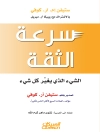Essential guidance for companies to examine and improve their fraud programs
Corporate governance legislation has become increasingly concerned with the ongoing resilience of organizations and, particularly, with their ability to resist corporate fraud from the lowest levels to the upper echelons of executive management. It has become unacceptable for those responsible for corporate governance to claim, ’I didn’t know.’ Corporate Fraud and Internal Control focuses on the appropriateness of the design of the system of internal controls in fraud risk mitigation, as well as the mechanisms to ensure effective implementation and monitoring on an ongoing basis.
- Applicable for a wide variety of environments, including governmental, financial, manufacturing and e-business sectors
- Includes case studies from the United States, Europe, and Africa
- Follows the standards laid down by the Association of Certified Fraud Examiners, the internationally recognized body governing this activity
- Accompanying interrogation software demo (software demo is not included as part of this book’s e-book file, but is available for download after purchase)
Written by a fraud prevention leader, Corporate Fraud and Internal Control addresses the concerns of both management and audit in ensuring a demonstrable level of activity to ensure sustainability of the organization and minimization of the impacts of fraud, upon early detection.
Innehållsförteckning
Preface xi
Chapter 1: Nature of Fraud 1
Fraud and Irregularities: Definitions and Concepts 2
Cost of Fraud 10
Notes 15
Chapter 2: Elements of the Crimes of Theft and Fraud 17
Document Fraud 20
Corroborating Documents 22
Procurement Fraud 22
Bribery and Corruption 26
Industrial Espionage 28
Check Fraud and Money Laundering 30
Notes 32
Chapter 3: Frauds Against the Individual 33
Online Auction Fraud 34
Consumer Frauds 35
Telephone Frauds 37
Charity Frauds 38
Misrepresentation of Material Facts 39
Concealment of Material Facts 40
Advance fees (4-1-9) Frauds 41
“Middleman” Frauds 42
Bait and Switch 43
Larceny 44
Extortion 45
Counterfeit Goods and Intellectual Property 45
Affinity Frauds 46
Pyramid Schemes 47
Ponzi Schemes 48
Career Opportunities 49
Cash Recovery Frauds 51
Chapter 4: Frauds Against the Organization 53
Bankruptcy Fraud 54
Check Fraud 54
Obtaining Fraudulent Loans 54
Unsolicited Orders 57
Embezzlement 58
Bribery 60
Corruption 60
Conflicts of Interest 61
Breach of Fiduciary Duty 62
Theft of Trade Secrets 63
False Claims 65
False Conveyancing 69
Tunneling 70
Conspiracy 72
Lapping 72
Kiting 73
Fraudulent Affiliations 74
Counterfeit Money 74
Benefit Frauds 75
Insurance Fraud 76
Payment Card Frauds 80
Pension Frauds 81
Tax Fraud 83
Insider Trading and Market Abuse 84
Click Fraud 84
Counterfeit Goods and Intellectual Property 86
Procurement Fraud 87
Notes 88
Chapter 5: Fighting Corruption 91
Bribery in Contracts 93
Red Flags at Enron and World Com 104
Nepotism and Favoritism 104
Abuse of Authority 108
Developing an Overall Anticorruption Culture 109
Notes 110
Chapter 6: Role of Ethics in Fighting Fraud 113
How Moral Decisions Are Made 114
Nature and Role of Ethics 115
Managing Ethical Risk 121
Reporting of Fraud 124
Notes 128
Chapter 7: Controlling Fraud 129
Corporate Governance and Fraud Prevention 130
Audit Committee’s Role in Fighting Fraud 136
Internal Control and the Prevention of Fraud 143
Fighting Shrinkage 156
Internal Audit Role 157
Notes 166
Chapter 8: Fraud Risk Management 169
Establishing the Corporate Fraud Risk Profile 170
Cascarino Cube 175
Roles of the Internal, External, and Forensic Auditor 178
Whistleblowing in Detecting Fraud 183
Note 186
Chapter 9: Investigating Fraud 187
Red Flags and Indicators of Fraud 188
Corporate Fraud Indicators 193
Conducting an Investigation 203
Tools and Techniques 207
Use of the Polygraph 217
Documenting the Investigative Process 219
Evidence Analysis 219
Investigative Errors 219
After the Event 221
Establishing an Investigations Function 221
Tracing and Recovering Assets 222
Notes 226
Chapter 10: Computer Fraud and Countermeasures 227
Mainframe Architectures 230
Mainframe Communications 233
Control of Servers 234
WAN Communications 236
Workstation Security 236
Mobile Computing and the Internet 238
Cloud Computing 241
Computer and Information Fraud 243
Monitoring Tools 247
Preventing E-Commerce Fraud 249
E-commerce Control Opportunities 254
E-payments 255
Internal Control Best Practices 255
Newer Fraud Schemes 256
Protecting Digital Assets 257
Foiling the Hackers 259
Investigating Computer Fraud 260
Computer Law 271
Note 273
Chapter 11: Legal Issues Surrounding Fraud 275
Impact of a Constitution 277
Fraud and the Laws of Evidence 277
Asset Recovery 279
Labor Legislation and Fraud 282
Note 284
Chapter 12: Industry-Related Fraud Opportunities 285
Banking Fraud 286
Money Laundering 304
Health Care Fraud 307
Insurance Fraud 313
Tax Fraud 319
Social Security Fraud 325
Fraud after Death 327
Construction Fraud 328
Notes 332
Appendix A: Audit Committee Charter 335
Appendix B: Corporate Fraud Policy 339
Appendix C: Whistleblowing Policy 343
Appendix D: Fraud Prevention Checklist 347
Appendix E: Fraud Risk Questionnaire Sample 351
Appendix F: Fraud Risk Analysis 357
Appendix G: Fraud CAATs 361
Glossary 371
About the Author 377
About the Web Site 379
Index 381
Om författaren
RICHARD E. CASCARINO, CRMA, CFE, CIA, CISM, MBA, is a principal of Richard Cascarino & Associates. He has over thirty years’ experience in audit training and consultancy and is a regular speaker at Institute of Internal Auditors (IIA) and Information Systems Audit and Control Association (ISACA) events throughout the United States, Africa, Europe, and the Middle East on fraud prevention, risk management, corporate governance, IT security, and internal auditing. He is a past president of the Institute of Internal Auditors (South Africa) and was the founding Regional Director of the Southern African Region of the Institute of Internal Auditors Inc. Cascarino is also a member of the Board of Regents for Higher Education at the Association of Certified Fraud Examiners.












